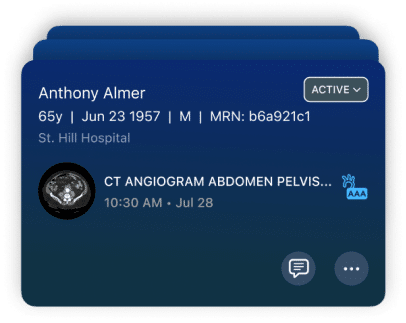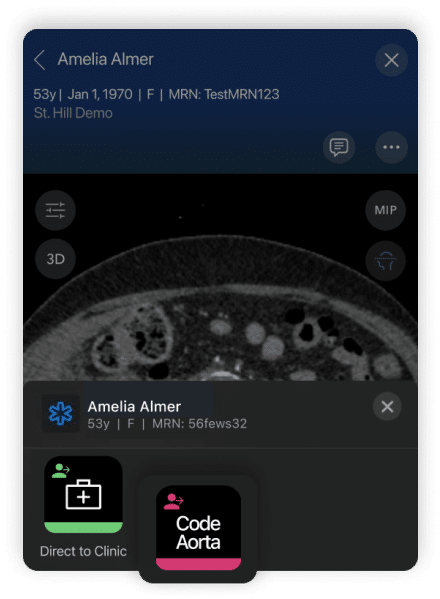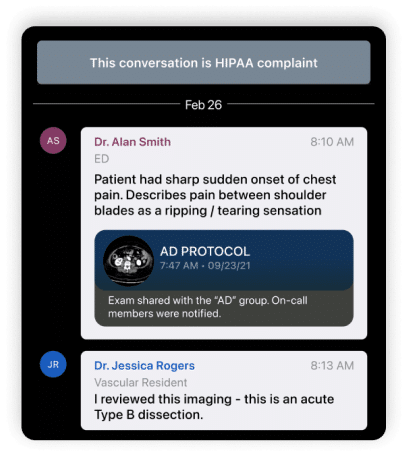Viz Aortic Solution
This is our AI-powered solution for the detection of suspected abdominal aortic aneurysm (AAA) and aortic dissection.

This is our AI-powered solution for the detection of suspected abdominal aortic aneurysm (AAA) and aortic dissection.


Automatically detects suspected AAA and aortic dissection (Type A and Type B) within minutes of CT scan completion.

Our clinical specialists work with you to customize the app based on your workflow. You’ll have access to critical patient information in real time, which may improve patient outcomes.

Early identification of patients enhances access to life-saving therapies for more patients. Now you can accelerate treatment decisions using our HIPAA-compliant solution.
Sensitivity
Specificity
Seconds from CT scan to specialist alert
Sensitivity
Specificity
Schedule a meeting
Experience the power of AI
See for yourself how you can harness the power of AI to accelerate patient access to care through AI-powered care coordination.